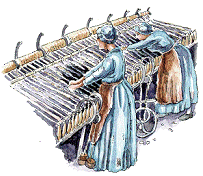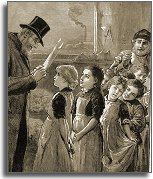 working
12 hour days !
working
12 hour days ! Children would often be given the job of feeding wool into the carding machines. After several hours of this (especially at night) the children would become tired and accidents were common.
Dr Lutener said in his report:
"We have frequent accidents because the children get sleepy at night and get their hands in the work; I and my partner have had frequently to amputate the hands and fingers of children"
|
For
more on the Chartist movement
and their struggle for better conditions for working people go to
the Llanidloes pages on Chartism
|
